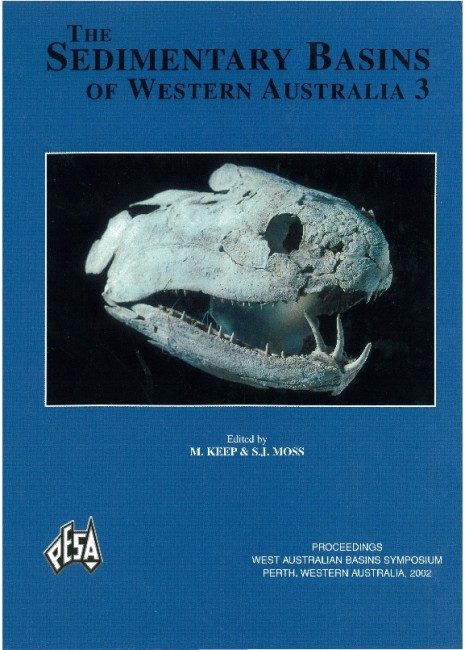Publication Name: The Sedimentary Basins of WA
Authors: J. Redfern & B.P.J. Williams
Publication Volume: 3
Date Published: December 2002
Number of Pages: 38
Reference Type: Book Section
Abstract:
The Permo-Carboniferous Grant Group of the Canning Basin, Western Australia offers a major potential hydrocarbon reservoir target. Analysis of core and outcrop data reveals a complex suite of facies, hence understanding of the depositional environment is crucial to reservoir prediction. Within this paper we hope to demonstrate the substantial evidence indicating that the basal Grant Group is predominantly glacial in origin.There is excellent borehole coverage of the Grant Group on the Barbwire Terrace, and outcrops on the margins of the Canning Basin and within inversion anticlines on the flanks of the Fitzroy Trough. The basal Hoya Formation comprises mud- and sand-rich diamictites, mass-flow sandstones, conglomerates and massive to rhythmically-bedded mudstones. These facies and their relationships are comparable with similar suites of facies identified in Permo-Carboniferous glaciogenic sediments from other Gondwanan basins in Australia and elsewhere.
Evaluation of the global petroleum prospectivity of Gondwanan Permo-Carboniferous glaciogenic sediments is in an early phase, primarily because of the complex nature of the facies relationships. However, where targeted
exploration has been carried out, they have proved to be prolific reservoirs. In excess of 100 fields have been
discovered and appraised at some 20 billion barrels of oil in place (largely in Arabia) and 7-10 TCF of gas (the
majority found in the Cooper Basin in Australia). Comparison with these other Gondwanan glacial successions will be crucial in developing potential play types for the Grant Group in the Canning Basin.


